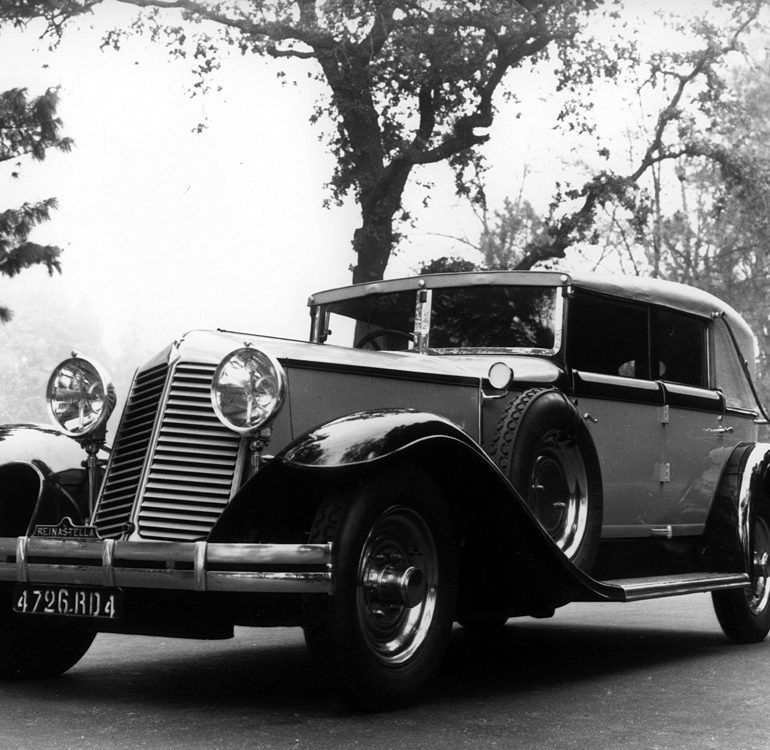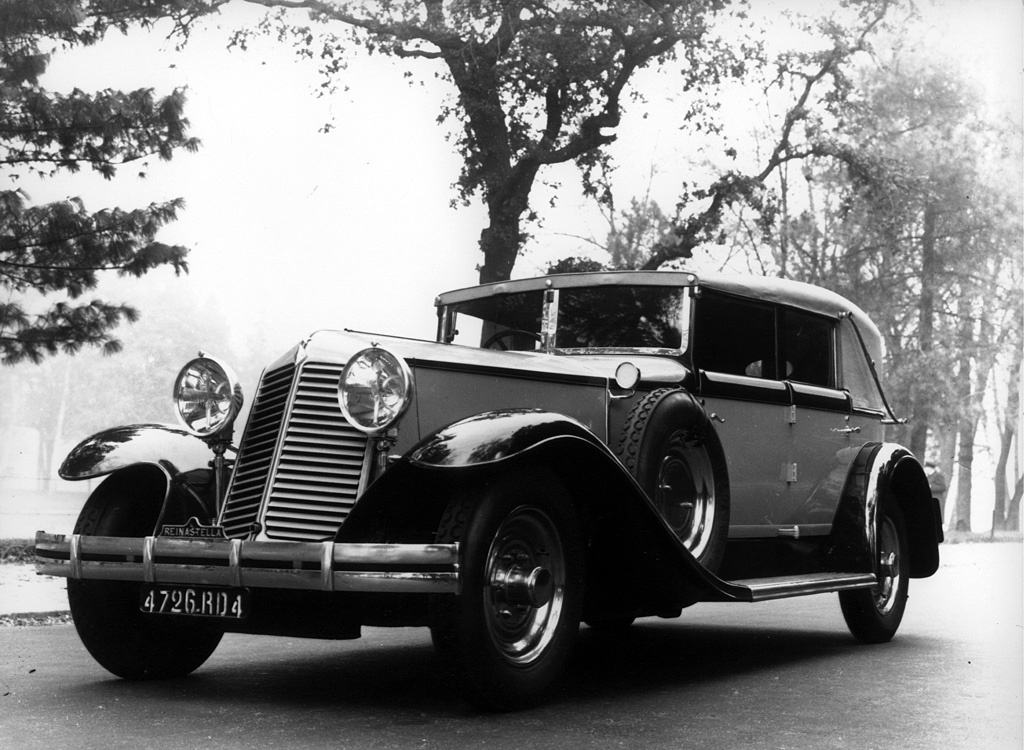1928 Renault Reinastella
Originally named Renahuit, the Reinastella was unveiled at the 1928 Paris Motor Show. The sophisticated elegance and luxury of this prestigious model made it the “Queen of Billancourt”.
The roaring twenties
The 1920s. Blithely unaware of the looming crisis, the rich gave free rein to their euphoria by buying luxurious cars. Hispano-Suizas, Rolls-Royces, Daimlers, Packards, Reinastellas… At the wheel of these exceptional vehicles, the elite had fun, dreamed the days away and inspired the dreams of others.
The Reinastella was one of these prestigious vehicles. A masterpiece of beauty and elegance, it was the worthy heroine of a decade that adored Josephine Baker, the Moulin Rouge and the Charleston.
A star is born
The Reinastella marked the start of the Stella series, a constellation of prestigious models produced until 1933. Recognizable by the star riveted to the radiator grille above the famous lozenge, the Reinastella illustrated the golden age of classic bodywork.
Sitting lower than its legendary cousin, the 40 hp, the Reinastella had a long bonnet, giving it the elegant styling of a luxury vehicle, on which the greatest body designers of the time could express their talent. It was acclaimed from its first appearance.
Its size was its most impressive feature: 5.30 meters long and 2 meters wide. It also weighed 2.5 tons! When it made its market debut, it was the biggest car ever produced by Renault.
Stylish and innovative
Less sporty than a Hispano Suiza or Rolls Royce, the Renault Reinastella placed the emphasis on comfort, strength and price, with a level of performance that was more than respectable. The Reinastella was the 1st Renault to be fitted with an 8-cylinder engine of 7.1 liters. It had a top speed of 140 kph, as highlighted in adverts of the time: “The Reinastella easily exceeds 130 kph and delivers the highest averages. On even the longest journeys, this sumptuous vehicle outshines the most luxurious trains for comfort, speed and safety”.
The radiator of the Reinastella also set an example. For the first time, it was placed on the front of the bonnet. All future Renault models adopted the same layout.
In 1933, a lighter version appeared on the market: the Reinasport. As suggested by its name, it was a sportier version, designed to compete with models from the UK and US. It was also more economical and, like its cousin the Nervastella, better adapted to the economic conditions that emerged in the wake of the 1929 crisis.
In Detail
| submitted by | admin |
| type | Series Production Car |





